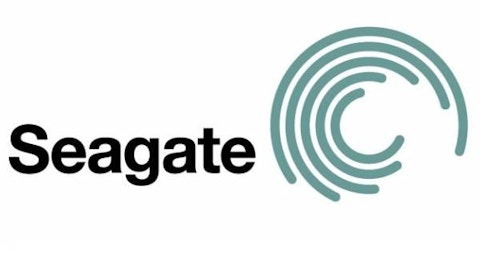Pandora Media Inc (NYSE:P) has had a nasty ride since its IPO in July 2011. The online radio company’s stock has gone nowhere over the past two years, as it continues grow revenue but fails to post a profit – a sign that costs may be spiraling out of control. Is Pandora about to doom investors, just as its namesake destroyed the world with her mystical box, or should investors save some hope – just as Pandora did, despite her grievous error?
Yet another unprofitable fourth quarter
For the fourth quarter of 2013, Pandora Media Inc (NYSE:P) posted a loss of 9 cents per share, or $14.6 million, down from a loss of 5 cents per share, or $8.18 million, it reported in the prior year quarter. Accounting for one-time charges and benefits, the company lost an adjusted 4 cents per share, beating the Thomson Reuters’ consensus estimate by a cent.

Royalties are a royal pain
Pandora’s obvious problem is its continued lack of profitability. Although ad sales – its main source of revenue – rose 51% to $109 million, royalty payments made to record companies and artists rose 59% to $77 million.
The fact that these costs are outpacing revenue growth is troubling, since co-founder Tim Westergren reported that Pandora’s per-track royalty costs have risen 25% over the past three years, with a 9% jump in 2013 alone. These costs are expected to rise an additional 16% over the next two years.
In addition to rising royalty costs, Pandora’s SG&A (sales, general & administrative) expenses have been rising, due to a rapid expansion of its sales team workforce, which it needs to promote and maintain its ad revenue.
A steadily growing user base in a fragmented market
Pandora Media Inc (NYSE:P) finished last month with 67.7 million users – claiming approximately 8.5% of the domestic Internet radio market.That seemingly small market share makes Pandora the largest Internet radio company in the U.S. – a testament to the fragmented state of the market, which includes rivals Spotify, Soundcloud and Vevo.
However, Google (NASDAQ:GOOG)recently announced plans to launch streaming music on its YouTube platform. With over 800 billion unique monthly users, YouTube’s music platform could flatten the entire landscape of Internet radio. With $48 billion in cash at its disposal, Google isn’t worrying about royalties – rather, the company’s enormous size could give it leverage against record companies to gain pricing power and better rates.
To make matters worse, Apple Inc. (NASDAQ:AAPL) is also rolling out its own streaming music platform. However, Apple demanded lower royalty rates than Pandora, which has resulted in a temporary stalemate with record labels.
Therefore, Pandora’s dominance of the market may be short lived.
Listener growth is a double edged sword…
Pandora’s total user base is still growing, but at a slower rate than before, with 47% growth in the previous quarter and 38% growth at the end of January.
Yet a slowdown in listener growth may actually be a blessing for Pandora Media Inc (NYSE:P).
Listener growth is a double-edged sword – although stronger growth garners higher brand recognition for customers and advertisers, it also makes it harder to sell ads effectively.
Over the past year, Pandora couldn’t stabilize its growth, since usage of its site, especially its mobile one, was rising at a faster rate than it could sell ads. That left it with a leftover inventory of advertising slots to fill.
The recent slowdown in listener growth has given the company some breathing room to match its mobile ad inventory to users through its direct sell-through platform – which means an advertisement is directly sold to the advertiser by Pandora, and not by a third party, thus generating more revenue from each advertisement.
Listeners also spent more time on Pandora, especially on its mobile platform, which now accounts for roughly 80% of total listener hours – rising 70% from the prior year quarter. This growth is problematic for Pandora, since higher total listener hours requires higher royalty payments. To reduce these costs, Pandora capped free listening hours at 40 per month.
Pandora also offers a paid service, which features ad-free streaming with higher quality audio. However, most users still use its free, ad-supported service.
At this point, Pandora needs to either grow ad revenue more aggressively, or to introduce better incentives for its paid subscription service coupled with more limitations to its free service.
Mobile Growth
Pandora’s brightest spot on its quarterly report was its mobile growth – a major priority for rising Internet companies. Pandora’s mobile revenue rose 111% to $80 million, while its mobile RPM (revenue per thousand listener hours) rose 24.3% to $25.05.
Forward outlook, and a new CEO
For the current quarter, Pandora anticipates first quarter revenue between $120 million to $125 million, beating the Thomson Reuters’ consensus estimate of $119.5 million. Although revenue growth remains strong, investors are more concerned with its bottom line growth, which remains threatened by rising royalties and sales expenses.
What’s more, Pandora’s CEO and co-founder Joseph Kennedy surprised investors with an abrupt resignation following its fourth quarter earnings. Kennedy will stay on as CEO until a replacement can be named.
Kennedy’s resignation stunned investors, considering Pandora’s positive growth during the fourth quarter. However, a new CEO with experience in the radio broadcasting or Internet advertising field may bring fresh perspectives to the young company, which may help it achieve profitability in the coming year.
Why so Sirius?
Sirius XM Radio Inc (NASDAQ:SIRI), which offers both satellite and streaming Internet radio, is Pandora’s only direct, publicly-traded competitor. In 2011, Sirius announced that it would offer personalized radio channels similar to Pandora, to offer a more customized experience for its listeners. Sirius XM Radio Inc (NASDAQ:SIRI) also has strong allies in the auto industry, which install its service by default in new vehicles.
How do these two competitors measure up fundamentally?
| Forward P/E | 5-year PEG | Price to Sales (ttm) | Return on Equity (ttm) | Debt to Equity | Profit Margin | |
| Pandora | 72.58 | 34.48 | 4.69 | -37.49% | No debt | -8.93% |
| Sirius XM | 24.69 | 1.11 | 6.19 | 146.41% | 60.28 | 102.08% |
| Advantage | Sirius | Sirius | Pandora | Sirius | Pandora | Sirius |
Source: Yahoo Finance, 3/10/2013
Sirius seriously outclasses Pandora in terms of pure fundamental value. In addition, Sirius XM Radio Inc (NASDAQ:SIRI), which has struggled with royalty headaches of its own, was able to lower its expenses considerably, partially due to a positive decision from the Copyright Royalty Board last December. Sirius’ total expenses have fallen 61.65% over the past twelve months as a result.
The Foolish Bottom Line
Pandora is still young. Although its top line growth is strong, its bottom line is suffering from high expenses – a classic problem with high growth Internet stocks. Rising royalty rates, negative margins, a new CEO and an uncertain future threatened by Google, Apple Inc. (NASDAQ:AAPL) and Sirius XM Radio Inc (NASDAQ:SIRI) all cast major doubts on Pandora’s outlook. For now, dear investors, let’s keep Pandora’s box closed.
The article Peeking Inside Pandora’s Music Box originally appeared on Fool.com and is written by Leo Sun.
Copyright © 1995 – 2013 The Motley Fool, LLC. All rights reserved. The Motley Fool has a disclosure policy.





